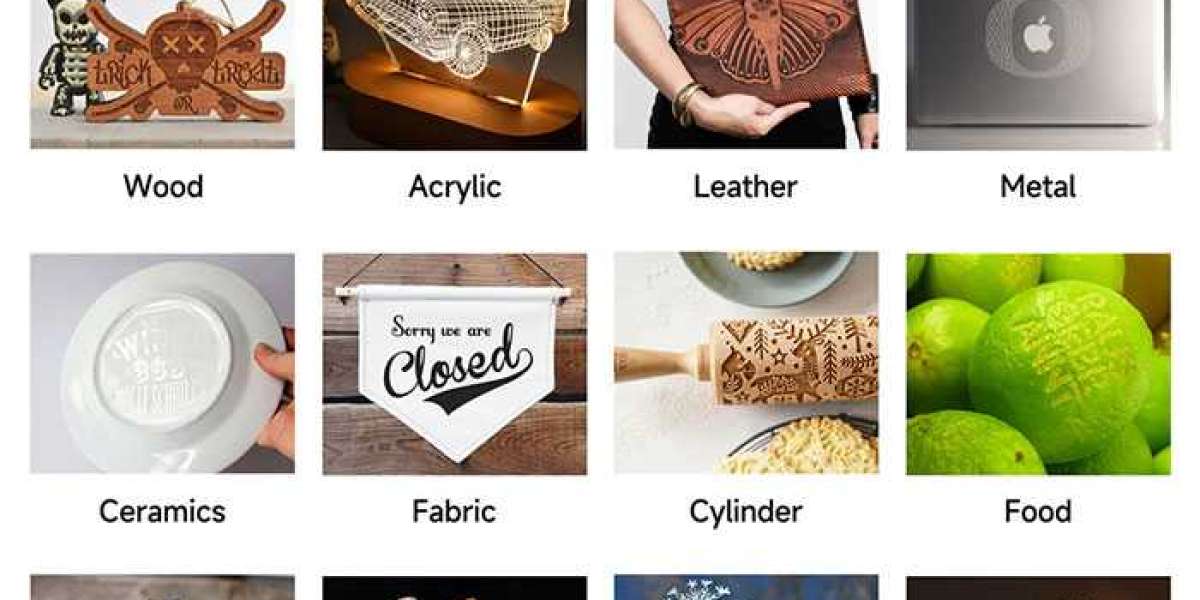Book Report
Answer 1
An outstanding feature of the book The Travels of a T-Shirt in the Global Economy: An Economist Examines the Markets, Power, and Politics of World Trade by Pietra Rivoli lies in the sheer interest of the author in the examination of the economic and political processes behind the trade of six-dollar T-Shirts. The book starts with Rivoli’s purchase of two T-Shirts in Florida that initiated the author’s journey in tracking the product cycle of a typical item in the market. In general, the story focuses on a story of a t-shirt and its life cycles, from cotton farms in Texas, a manufacturing plant in China, the US market with various shops, where this T-shirt is sold, and the second-hand market in Africa where this T-shirt ends up at the end. Rivoli managed to focus her research on a hypothesis that American cotton industry benefits from protectionist policies and governmental support, and T-shirts enter the free market only when they reach the last destination – second-hand market in Africa. The Industrial Revolution ignited the textile industry and started global cotton wars, since cotton became the king of the economy by providing consumers all over the world with affordable clothes. In the U.S., the government immediately initiated tariffs that protected the textile industry from British textile imports, while Britain initiated similar laws that also supported protectionism in the market from Indian textiles. In addition, the government supported the textile industry in the USA by means of slavery that helped to keep labor costs minimal and revenue levels extremely high. Moreover, the book emphasizes the struggle of the U.S. government in keeping labor costs minimal. When slavery became illegal, sharecropping became the solution to support low labor costs by initiating sharecropping that led to numerous debts. Finally, when the U.S. citizens had to fight overseas during the war, the government created a Bracero program that brought cheap labor force from Mexico to work on cotton plantations.
Further, the author pays much attention to the protectionist initiatives of the U.S. government aimed to protect the textile industry and enhance revenue from cotton farming. After Chinese factories had made T-shirts using U.S. cotton, T-shirts entered the USA and the government used taxes, tariffs, and subsidies to regulate trade. It was made to ensure that Chinese T-shirts would not have much pressure on the same products made in the USA. In addition, the government initiated regulations that monitored import of goods from other countries. There were specific criteria controlling the color of the fabric and what parts of products could have a foreign origin. These standards and regulations ensured protection of the U.S. textile industry from the influence of free trade and globalization tendencies. However, the author emphasized that the U.S. government used the benefits of free trade only at the final stage of the T-shirts` lifecycle in the African market. The U.S.-made T-shirts contributed to fierce rivalry in the African market as the local textile industry could not produce new T-shirts of the quality similar to that of the worn American T-shirts. In addition, the book explained the trading strategy of the U.S. cotton industry and its maximum usage to benefit the U.S. economy by producing oil from cottonseeds and using it in the manufacturing process of food. At the end of the book, the reader starts realizing that a simple product like a T-shirt has a long and complex product chain that depends on various factors including globalization, politics, economic conditions, and international trade. As a result, the book clarified the structure of the cotton industry that once brought billions of revenue to the USA. The key point of the book lies in showing the myriad of factors that influence simple products and formulate their price under the influence of the diversity of market forces and governmental initiatives.
Answer 2
The main idea of the book is deeper than an explanation of the manufacturing process behind T-shirts that every consumer can afford. A precise evaluation of the market tendencies and the history of the U.S. textile industry is the tip of the iceberg that Rivoli formulated in the process of her research. First, Rivoli emphasized that none of the industries can go through multiple stages of evolution without governmental support. The book mentions the struggle of small countries trying to reduce poverty and unemployment by entering the cotton industry. However, the U.S. textile industry started its rapid development with an aggressive competition strategy that contributed to a significant portion of revenue to the national budget. As a result, the government started supporting farmers by initiating research and development that brought numerous ideas about how to process waste from cotton plants and use them for additional revenue in the food industry. In addition, cotton fuzz also contributed to the manufacturing of blankets, pillows, and medical supplies. The main goal of the U.S. government became profit maximization from the farming sector. On the one hand, Rivoli treats U.S. farmers with disrespect due to their close collaboration with research and development institutions that showed how to use cotton in all possible ways. On the other hand, it is difficult to imagine a country that would not use an opportunity to improve its economy using a single industry that brought an outstanding demand for specific products. Rivoli unintentionally accused farmers of collaborating with research institutes for some reason and emphasized negativity of U.S. protectionism strategies. It is ridiculous to consider Rivoli’s exaggerated opinion that the government should not take care of the industry’s development and its evolution. If the country has resources to conduct additional research and investigation in a specific industrial field, it is logical to see governmental improvements of the industry and protection of its sustainability in order to contribute to prosperity of the nation.
Finally, the main idea and message of the book lies in the interrelated nature of the government and any industry. The government protects powerful industries that nourish their power from protectionist measures thus ensuring profitability and competitiveness. It is obvious that government and industry cannot exist without each other. Rivoli might have discussed protectionism from a negative viewpoint under the influence of the contemporary tendencies around free market that continues to regulate economies of the countries through the WTO regulations. Nowadays, the countries have equal opportunities in trade thanks to the terms of free trade and ineffectiveness of protectionism. Rivoli might have discussed protectionism of the U.S. textile industry and its influence on the US leadership in cotton farming in order to emphasize the benefits of free market trade in terms of globalization. At the same time, free market trade explains the loss of the U.S. leadership in the textile industry and the contemporary dominance of such countries as Egypt, India, Pakistan, China, Brazil and Syria. In addition, the WTO allows countries to protect five strategic industries that ensure a country’s financial and economic sustainability by means of subsidizing. These industries include steel, motor vehicle, mining, aerospace and petroleum industries. It means that the cotton industry cannot compete with these industries and its protection is not effective and significant. Other industries present more opportunities supporting the country’s sustainability and further growth (Rivoli, 2009). As a result, Rivoli came to the main conclusion – economic fluctuations and evolution of trade cannot guarantee continuous profitability of a particular industry. The strategies applied to the development and evolution of the specific industry cannot guarantee the same effectiveness in the contemporary world of trade and economy.
Answer 3
While reading the book, it is difficult to understand whether Rivoli supports or opposes protectionism in the market, which started in the 19th century. However, it is possible to present arguments emphasizing the crucial role of protectionism in the profitability of the cotton industry. In addition, the book describes protectionism in comparison to free trade and helps the reader make specific conclusions. A historical perspective on the textile industry and its outburst in the USA has a myriad of arguments that explain the importance of protectionism in supporting the most profitable industries. At the beginning of the book, Rivoli presents numerous arguments supporting the nature of protectionism in trade and economy that ensures profitability of the industry. The example of cotton helped to emphasize the experience of global economy in limiting imports to enhance the national economy. The period when the USA focused on the cotton farming and textile industry showed the interest of other countries in the cotton plantations in order to reduce poverty. However, protectionism allowed the USA to take care of its economy by limiting imports of foreign products and increasing exports of the products made in the USA instead. It ensured the increase of workplaces and improvement of the financial sustainability of the nation. Unfortunately, the story of T-shirts also mentions the crucial role of the low-cost labor that started its existence from the times of slavery. The revenue-generating platform focused on making textile products affordable that ensured profitability of the textile industry. Simultaneously, slavery and further low-cost decisions helped to maximize the revenue. The Industrial Revolution made workplaces in the textile industries highly appealing, since poor families finally got a chance to escape from less than favorable living conditions (Rivoli, 2009). All these factors contribute to the support of protectionism based on the arguments Rivoli presented in her book. However, there is another viewpoint in the same book that discusses free trade as the main benefit of globalization and a proof of trade evolution.
The part of the book that emphasizes the phenomenon of free trade is an element that supports the negative influence of quotas, subsidies, and tariffs on the international trade. Africa, as the final destination of American T-shirts, became a proof that free trade has favorable conditions for the development of all countries. Rivoli intentionally mentioned the crucial role of the WTO in the establishment of free trade relations between countries. The organization allowed keeping only several industries under protectionist policies in order to emphasize the country’s specialization in the specific field according to the available resources. Rivoli mentioned the creation of the WTO as a crucial milestone in the development of trade relations, since it helped to provide countries with equal opportunities in economic development. Nonetheless, the countries are free to have natural limits of their industrial evolution. However, the WTO provided them with a chance to avoid restrictions on import of goods among countries. Regardless of the fact that Rivoli supports neither protectionism nor free trade openly, the reader can trace the author`s thoughts that explain the benefits of free trade over protectionism. Positive effects of economic isolation of the country are temporary, and the author proved this idea by describing a detailed product cycle of T-shirts. The country cannot ensure long-term economic growth and prosperity without support of globalization and enhancement of trade relations. Active exchange of goods and protection of several industries is a reliable way to contribute to the improvement of global economy. As a result, Rivoli makes it clear that free trade is not a panacea for economic problems but it improves the nation’s welfare significantly.
Answer 4
International trade is a chance that countries use to foster their economic development and prosperity. Rivoli made it clear that political environment is crucial to relations in international trade. International law is free to issue standards and principles regulating exports and imports. Rivoli discussed the journey that cotton took from the USA to China and back to the USA with an intention to mention the role of tariffs and trade laws. The US government created an economic environment that welcomed imported goods only partially. It was necessary to support the national economy by encouraging Americans to purchase products manufactured in the USA. In addition, the USA had a strict control over imports and ensured that imported textile products will not have a higher quality than local products. As a result, these legal practices aimed to improve national economy by isolating it from free trade and international relations became the main obstacles in engagement of the country in global trade.
Another notion that supports opinion of Rivoli with reference to international trade being influenced by the government includes political and legal forces. The book discussed the decision of the U.S. cotton industry to collaborate with Chinese manufacturing factories. It is a logical decision that many countries practice in contemporary international trade. However, this concept has a historical background that Rivoli revealed in her research. The government is free to organize the performance of its industries by issuing specific laws and regulations that minimize labor and manufacturing costs and maximize profits. Rivoli claims that various government restrictions can present both opportunities and restrictions in international trade. The truth is that countries define specific legal backgrounds in order to support their economic sustainability and growth. However, these regulations can lead to a conflict among the countries. The book mentioned the situation when the USA initiated an aggressive restriction policy against other countries willing to engage in the textile industry by growing cotton. The size of the USA and its efforts to minimize imports and maximize exports became a beneficial initiative that fostered further evolution of trade. It means that foreign trade policy has the main influence on the development of the economy and various industries that comprise it.
International trade cannot exist without political influence, since legal aspects have the most sizeable effect on the development of trade relations. Stability is one of the main components of politics that inspires the government to use the most unusual elements of the Industrial Revolution. Rivoli emphasized the crucial role of the Industrial Revolution globally with an intention to show reaction of different countries to new trade opportunities. The U.S. government willingly engaged in relations with China, since it became a reliable way of reducing manufacturing costs associated with production of T-shirts. As a result, a mixture of cheap labor and low-cost manufacturing brought billions of dollars to the US budget. Finally, Rivoli discussed the interdependent nature of the governments engaged in international trade and inability to avoid trade barriers in case of the country’s decisions to focus on protectionism. Nowadays, excessive protectionism is the main threat to national sustainability, since globalization made free trade the main requirement for international collaborations.
Answer 5
The book became a breath of fresh air that brought new insight into the economy and its composition. Rivoli succeeded in applying an unusual approach to the evaluation of the product cycle. A T-shirt became a common product that nobody can suspect that it has a complex economic and historical background. International trade is a complex topic that requires endless weeks of investigation in order to understand its nature. However, Rivoli focused on a single product that helped to see the main concepts behind international trade under the influence of various forces. In particular, governments represent the main forces that initiate different laws, standards, regulations and tariffs that contribute to the sustainability of other nations. The book is full of surprising facts that explain the dominance of specific industries in a global aspect. The historical development of the U.S. economy proved that political environment and continuous conflicts between countries are the reasons for non-stability in small-sized countries that struggle to escape poverty. In my opinion, aggression in the economy is a necessary measure that governments have to use in order to take care of their citizens. Unemployment, poverty and endless debts may inspire the governments to develop legal measures that protect local economies but reduce opportunities of other countries.
The most intriguing idea of the book focuses on the external factors that influence the journey of a T-shirt starting from cotton plantations in Texas. Rivoli shared her astonishment with the readers concerning the influence of politics and creativity in the economy, and historical background on the product’s life cycle. In the process of the T-shirt evaluation, Rivoli found that competitive economic markets have less influence on the product’s development than the government itself. It is natural to expect the government to support a profitable product that millions of consumers can afford. It means that the efforts of the U.S. government focusing on the research and innovations in the textile industry were justified by high demand for the T-shirts. The USA wouldn`t be able to manage to dominate in the textile industry over 200 years, if the government have not provided funds for investigation of how to use waste from cotton production in other industries. In my opinion, Rivoli revealed priceless experience of the textile industry that nations nowadays try to use as an advantage in various economic processes. Regardless of the fact that contemporary companies are performing in terms of free trade, the truth is that every government aims to find unique resources and opportunities that will help it dominate in the contemporary economic field. Globalization helped to enhance economic stability and contributed to equality in the international trade. However, protectionism remains one of the most reliable strategies, which enables a government to take care of a local economy. Thanks to the WTO, countries have a chance to protect their most profitable industries. Rivoli helped to understand the tendencies in the economic environment that have a significant influence on the international trade. While the USA benefits from impressive leadership in the textile industry, other countries continue to suffer from poverty. It means that protectionism prevents from global development by making international trade impossible and ineffective. Finally, thanks to the book, I realized the importance of analyzing a product’s life cycle and the forces influencing its existence. It is necessary for evaluation of a market, business opportunities, and threats that can reduce profits. Rivoli deserves respect and recognition for her dedication and hard work that provided a wide audience with a detailed guide on how to analyze external and internal forces of any industry.
This work was written after the request "write my book report" left by the client to Lola Nickson.








